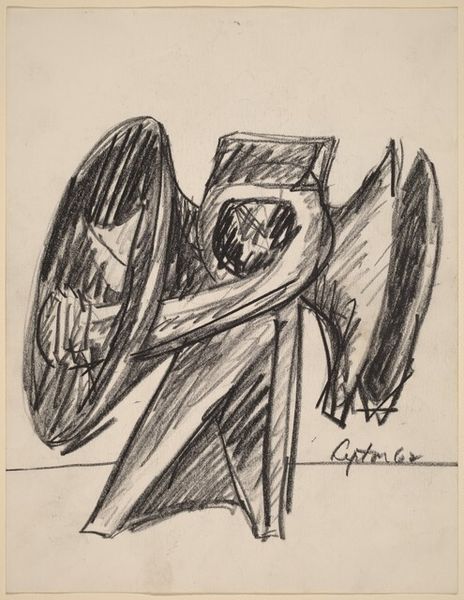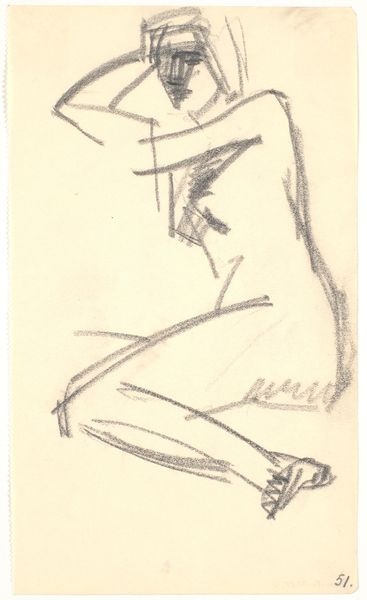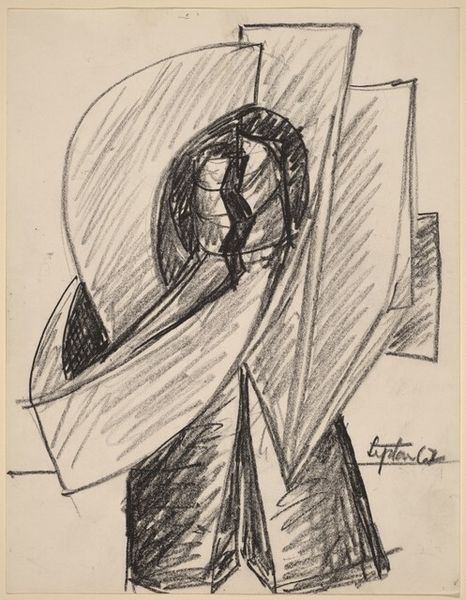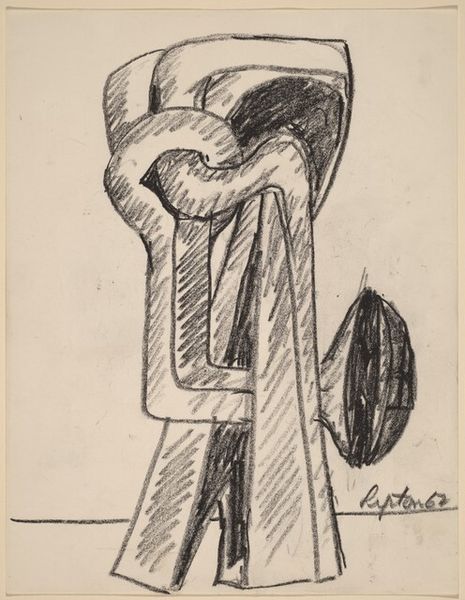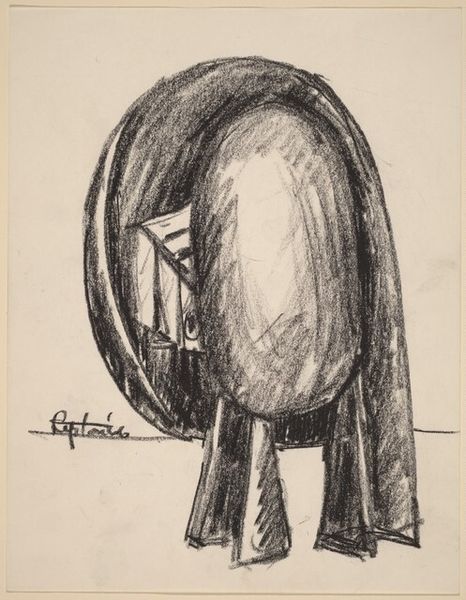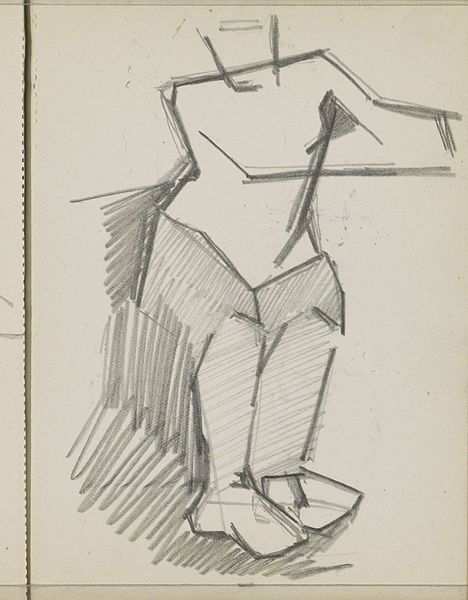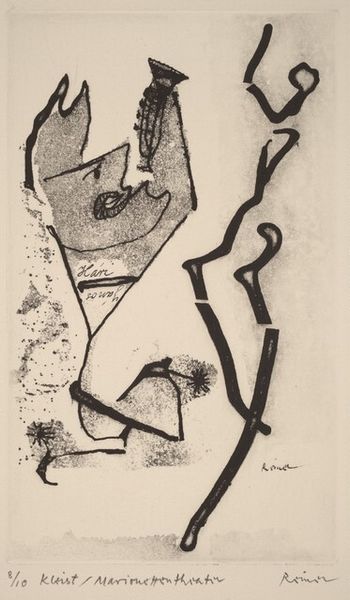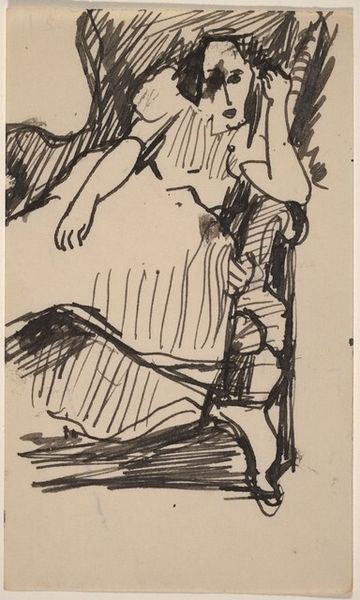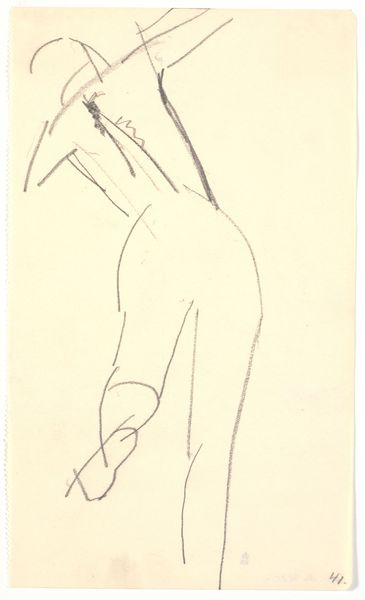
drawing, graphite
#
drawing
#
abstract
#
form
#
graphite
Dimensions: sheet: 27.94 × 21.59 cm (11 × 8 1/2 in.)
Copyright: National Gallery of Art: CC0 1.0
Editor: Here we have Seymour Lipton's "Untitled," a graphite drawing created in 1976. The stark contrasts between light and shadow give it a sculptural, almost monumental feel, despite its being a drawing. What strikes you most about this piece? Curator: The power lies precisely in the formal tensions it creates. The artist has flattened what seems to be a three-dimensional object, presenting us with a sophisticated interplay of lines and shapes on a single plane. Notice how the forms build upon one another. Editor: Yes, the shapes do have an architectural quality. Almost like a sketch for a building. Can you expand on that tension you mentioned? Curator: Absolutely. The illusion of depth, achieved through varied line weights and densities of shading, is constantly being undermined by the drawing's inherent flatness. It's a fascinating dialogue between representation and abstraction, where the subject, whatever it may be, is ultimately subservient to the formal arrangement. Do you see how certain lines are bold, almost aggressive, while others are delicate, almost hesitant? Editor: I see it now. It gives the drawing a dynamic quality, like it’s caught between being solid and dissolving into pure form. Curator: Precisely. Lipton exploits the materiality of graphite, allowing its textural qualities to further complicate our perception. The smudging and layering become active elements, as important as the outlines themselves. A demonstration of the capacity of lines. Editor: It's interesting to consider how the abstraction allows for such different interpretations of form. I never would have looked at it this way. Curator: These are the subtleties to look for. By understanding its intrinsic artistic properties we appreciate the art more.
Comments
No comments
Be the first to comment and join the conversation on the ultimate creative platform.
